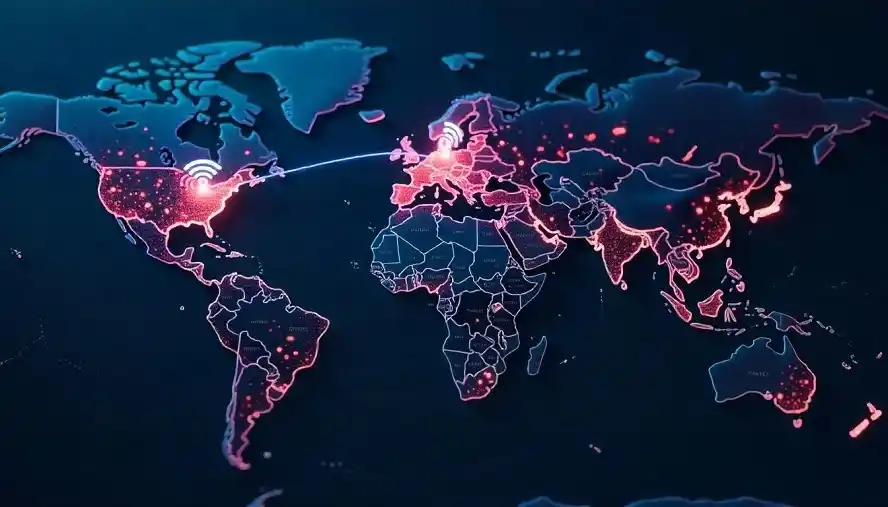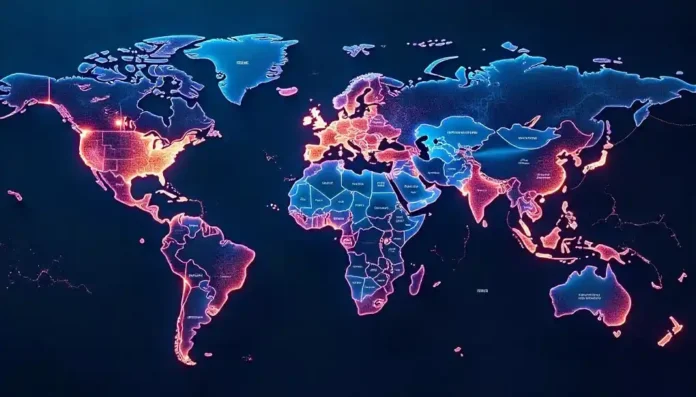Internet speed is like a superhighway for information. Imagine how cars need smooth roads to drive fast—that’s what internet devices like computers, phones, and tablets need to load things quickly. If your internet is slow, it can feel like watching paint dry when you’re waiting for a video! But when you have the fastest internet, everything works smoothly. Students can learn online without any delays, doctors can check on patients from far away, and families can have video calls without screens freezing up.
For countries, fast internet brings lots of benefits. It helps businesses grow by allowing faster communication and services. It also makes cities smarter by connecting more technology and keeping people happy with quick access to online resources. In today’s world, reliable internet is essential. It lets us stream movies, play games, work remotely, and study without any interruptions. Countries that invest in improving their internet often see advancements in their technology and stronger economies.
This article will look at the top 20 countries with the fastest internet speeds in 2025.
Contents
Why Internet Speed Matters

Internet speed plays a huge role in everyday life. With high-speed internet, people can enjoy smooth video streaming, quick downloads, and real-time video calls. For businesses, fast internet supports cloud services, online sales, and global communication. Slow internet can hold back development, while faster speeds help nations stay competitive in technology and innovation.
How Internet Speeds Are Measured

Internet speed is measured in megabits per second (Mbps). Think of Mbps as how many “digital buckets” of data your internet can carry each second. Tools like Speedtest Global Index check speeds worldwide by testing downloads (how fast you get data) and uploads (how fast you send it). Latency—the delay before data starts moving—is also key. Low latency means less lag in video games!
Top 20 Countries with the Fastest Internet Speeds in 2025

A. Fixed Broadband Rankings
- Singapore – 460 Mbps: Uses fiber-optic cables—thin glass wires that send data at light speed!
- France – 459 Mbps: Government rules help companies build cheap, fast networks.
- Hong Kong – 391 Mbps: This tiny city with big competition between internet providers.
- United Arab Emirates (UAE) – 364 Mbps: Buried thousands of miles of cables under deserts for smart cities.
- Chile – 348 Mbps: Connects even remote mountain towns to high-speed internet.
- United States – 334 Mbps: Large network investments improve both urban and rural access.
- Thailand – 310 Mbps: Focus on affordable, high-speed networks for citizens.
- Denmark – 329 Mbps: Uses wind energy to power green internet towers.
- Iceland – 389 Mbps: Efficient networks covering vast rural areas.
- Israel – 318 Mbps: Focused on both cybersecurity and rapid digital expansion.
These countries lead in broadband internet due to investments in fiber-optic networks and modern infrastructure.
B. Mobile Internet Rankings
- United Arab Emirates (UAE) – 554 Mbps: 5G towers cover 95% of the country—even in deserts!
- Qatar – 492 Mbps: Spent billions on mobile networks for the World Cup.
- South Korea – 300 Mbps: Let 5G phones download a movie in 3 seconds.
- Kuwait – 307 Mbps: Small country with easy-to-build cell towers.
- Denmark – 260 Mbps: Uses wind energy to power internet towers.
- Bahrain – 231 Mbps: Expanded coverage with investments in tech startups.
- Portugal – 227 Mbps: Built nationwide 5G infrastructure quickly.
- Iceland – 221 Mbps: Focused on connectivity for all areas, including remote islands.
- Macau (SAR) – 218 Mbps: Major upgrades for better casino and tourism industry access.
- Saudi Arabia – 214 Mbps: Smart-city projects improving nationwide speeds.
The UAE and Qatar have the fastest mobile internet due to heavy investments in 5G technology.
Unique Challenges Faced by High-Speed Internet Countries
Countries with the fastest internet speeds, like the UAE and Singapore, face some hurdles despite their success:
Infrastructure Costs
Building fiber-optic networks in large or remote areas is expensive. For example, Chile struggles to connect its remote mountain regions.
Energy Demands
High-speed networks require a lot of power. Denmark uses renewable wind energy to keep its networks running sustainably.
Cybersecurity Risks
Faster internet attracts hackers. Singapore invests heavily in cybersecurity to protect its growing digital economy.
Balancing Urban vs. Rural Access
Switzerland ensures that its villages have internet speeds that match its cities, but this requires constant network upgrades.
How Internet Speeds Shape Daily Life
In top-ranked nations, the fastest internet transforms how people live and work:
- Work: In France, 40% of workers use video calls without lag, helping remote jobs thrive.
- Healthcare: South Korea’s 5G networks allow doctors to check patient data instantly.
- Entertainment: UAE residents can download movies in seconds.
- Smart Homes: Hong Kong’s smart devices, like fridges and lights, depend on stable 391 Mbps connections powered by the fastest internet.
Government Policies Driving High Speeds
Governments use smart strategies to keep the internet fast:
- Funding Infrastructure: The UAE spent over a billion dollars on undersea cables for smart cities.
- Encouraging Competition: France requires internet providers to share towers, cutting costs and boosting speed.
- National Broadband Plans: Singapore’s “Smart Nation” program ensures fiber access for every household.
Without these efforts, countries like Pakistan struggle with average speeds of just 25 Mbps due to limited investment.
Education and Job Opportunities
Fast internet unlocks many opportunities:
- Online Learning: Danish students access virtual labs with 260 Mbps speeds.
- Freelancing: Romanian programmers attract global clients with 322 Mbps upload speeds.
- Startups: South Korea’s mobile speeds help developers quickly test new apps.
In rural areas, like parts of Kenya, slow internet forces students to travel long distances just to find Wi-Fi.
Real-Life Business Transformations
Fast internet boosts businesses around the world:
- Slack (U.S.): Uses 334 Mbps broadband to support team collaboration.
- Shopify (Canada): Manages millions of online stores with 323 Mbps speeds.
- SK Telecom (South Korea): 5G-powered apps let shoppers try clothes virtually.
- Dubai’s Tourism: 5G streams live desert safaris, increasing visits by 30%.
The Digital Divide: Challenges for Lower-Ranking Nations
While France enjoys speeds of 450 Mbps, countries like Pakistan average 25 Mbps. Many developing nations face barriers such as high costs, limited infrastructure, and rural challenges, preventing them from accessing the fastest internet. In rural Kenya, kids walk miles to cafes just to do homework! Bridging this digital divide and enabling access to the fastest internet is crucial for global progress.
Future of Global Internet Speeds
Soon, satellites like Starlink will beam internet from space to deserts and oceans. Scientists are also testing quantum internet—a super-secure network using light particles! But for now, fiber and 5G rule.
Conclusion
Fast internet isn’t just for Netflix—it’s for schools, hospitals, and jobs. It allows students to join virtual classes, businesses to operate smoothly with video conferences, and patients to receive remote healthcare. Countries that focus on improving internet speed and achieving the fastest internet are enhancing their digital infrastructure and preparing for future success. They are building networks that help people work from anywhere and access information instantly.
Countries investing in advanced infrastructure like fiber-optic cables and 5G are winning the speed race. This progress isn’t just about technology—it’s about improving people’s everyday lives. The fastest internet reduces stress, keeps families connected across the globe, and even powers innovations like smart homes and real-time cloud computing. Imagine downloading a full-length movie or game in the blink of an eye! By 2030, that dream might become a reality.
Having the fastest internet helps people live better, work smarter, and stay connected to the world. To read more articles like this, visit gownmagazine.















